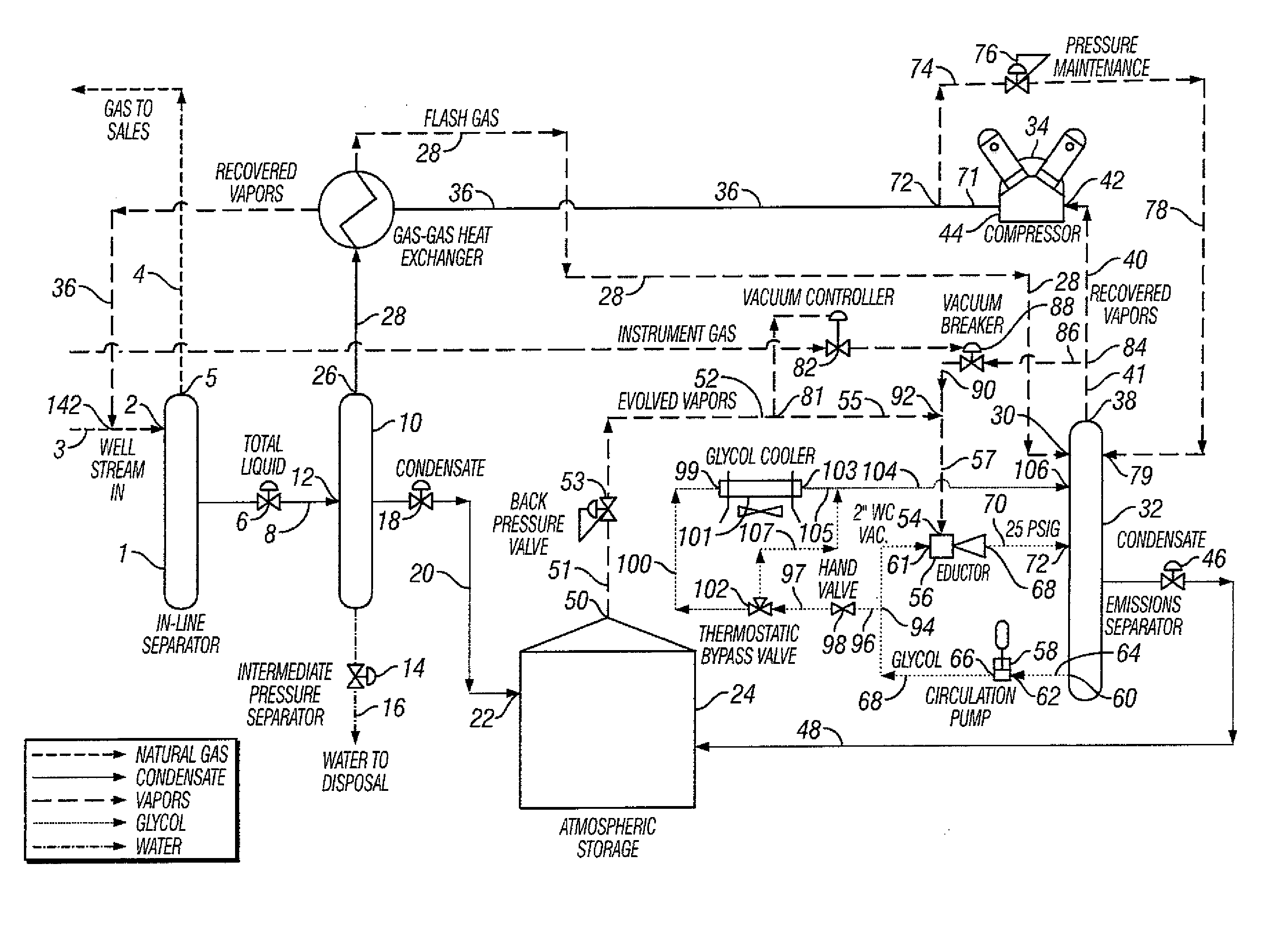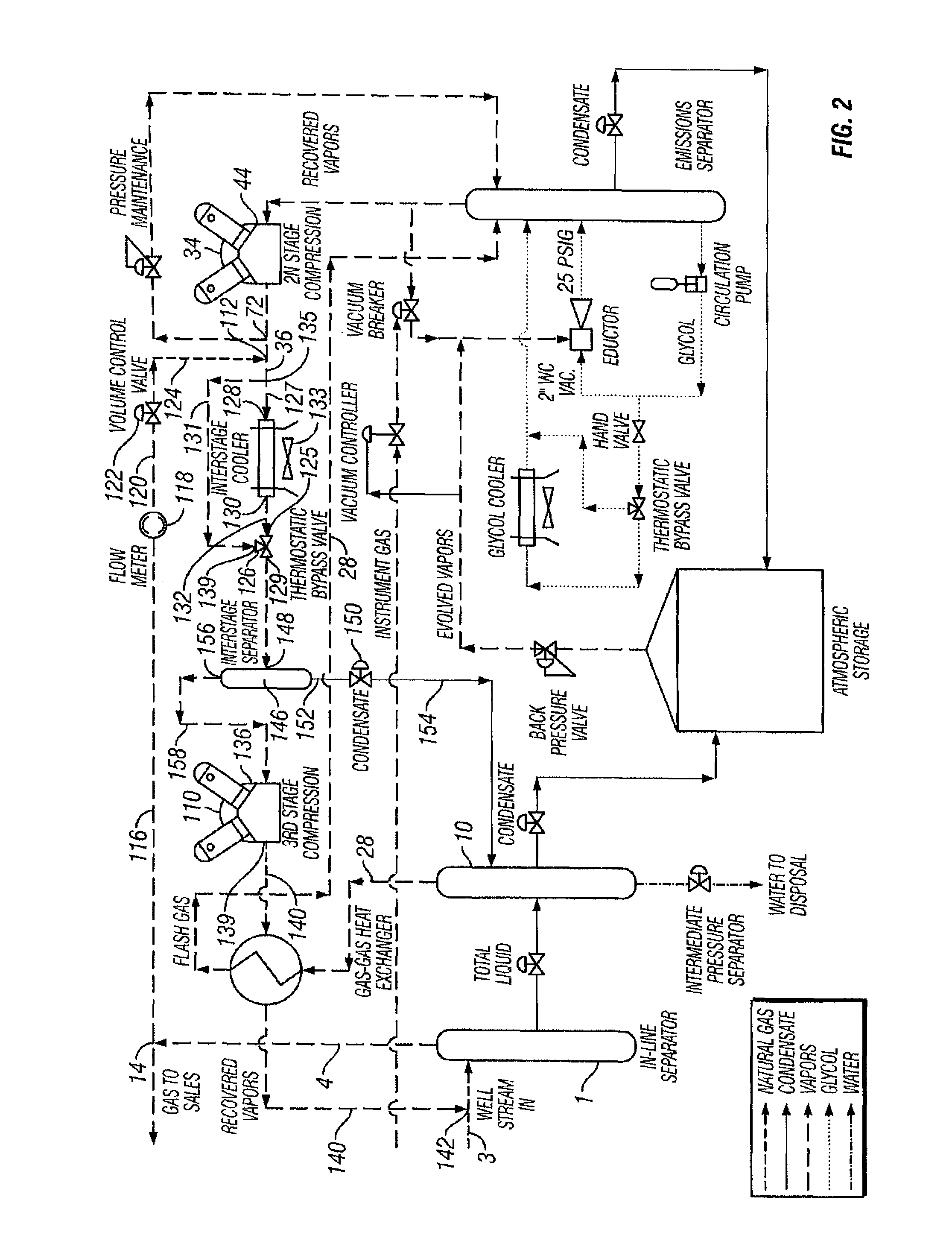Vapor process system
a technology of vapor processing and process system, which is applied in the direction of liquid hydrocarbon mixture recovery, lighting and heating apparatus, solidification, etc., can solve the problems of gas venting to the atmosphere, waste of heat energy released by burning natural gas, and waste of gas released in the intermediate pressure separator
- Summary
- Abstract
- Description
- Claims
- Application Information
AI Technical Summary
Benefits of technology
Problems solved by technology
Method used
Image
Examples
Embodiment Construction
[0022]The present invention provides a pumping system to replace plunger lifts used on natural wells. For example, in one embodiment, the pumping system such as that disclosed and marketed by Unico, Inc. (“Unico”) (or other appropriate) pumping system can be used with an engine such as that provided by Marathon Engine Systems (or other appropriate engine) to replace plunger lifts on natural gas wells. Replacing the plunger lift increases a well's production time by eliminating the lost production time associated with shutting down the well to allow the plunger to fall to the bottom as well as eliminating the lost production time required for the well to build up enough pressure to cause the plunger to rise to the surface. Often, the lost production time is greater than a well's production time. Besides increasing a well's production time, the Unico pumping system further increases a well's production by lowering the pressure the producing formation is producing against. The fluids p...
PUM
| Property | Measurement | Unit |
|---|---|---|
| pressures | aaaaa | aaaaa |
| pressures | aaaaa | aaaaa |
| pressures | aaaaa | aaaaa |
Abstract
Description
Claims
Application Information
 Login to View More
Login to View More - R&D
- Intellectual Property
- Life Sciences
- Materials
- Tech Scout
- Unparalleled Data Quality
- Higher Quality Content
- 60% Fewer Hallucinations
Browse by: Latest US Patents, China's latest patents, Technical Efficacy Thesaurus, Application Domain, Technology Topic, Popular Technical Reports.
© 2025 PatSnap. All rights reserved.Legal|Privacy policy|Modern Slavery Act Transparency Statement|Sitemap|About US| Contact US: help@patsnap.com



